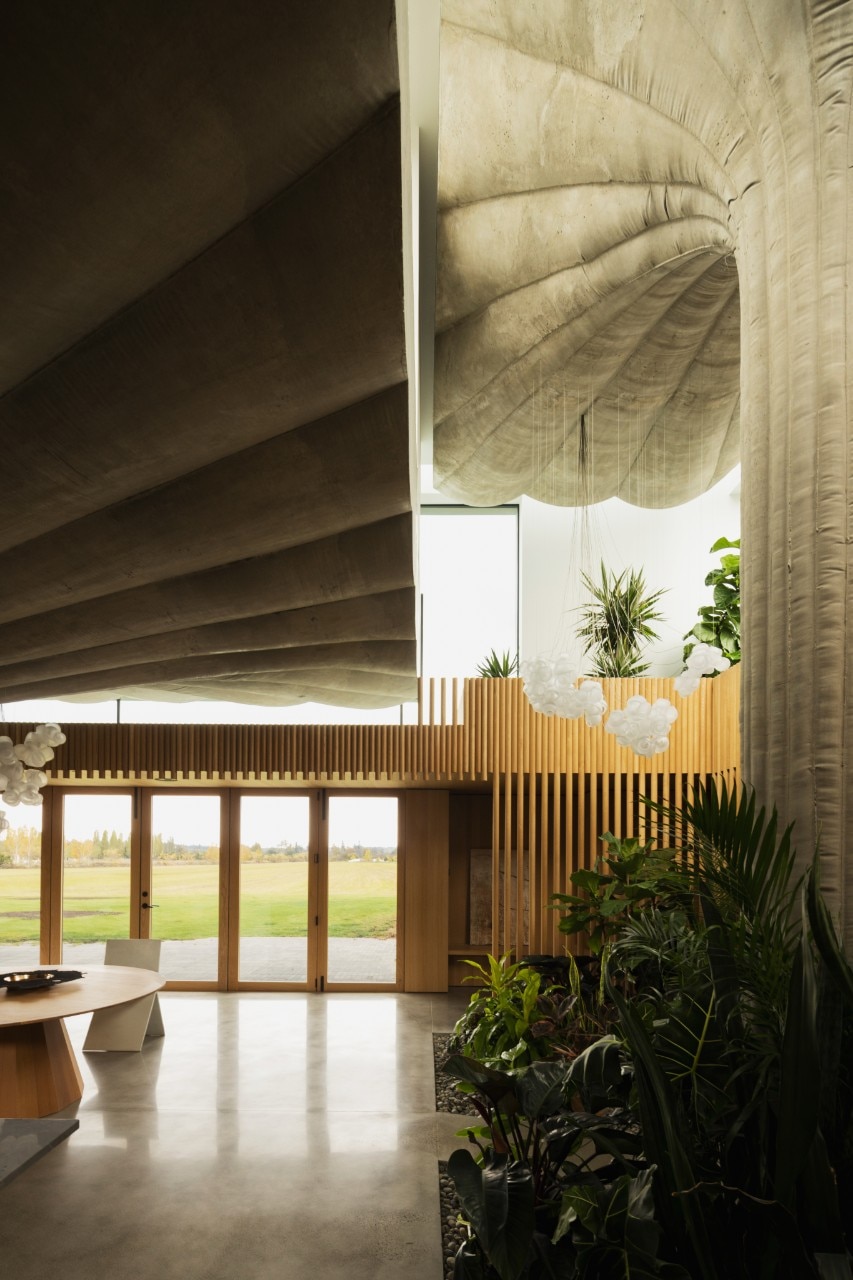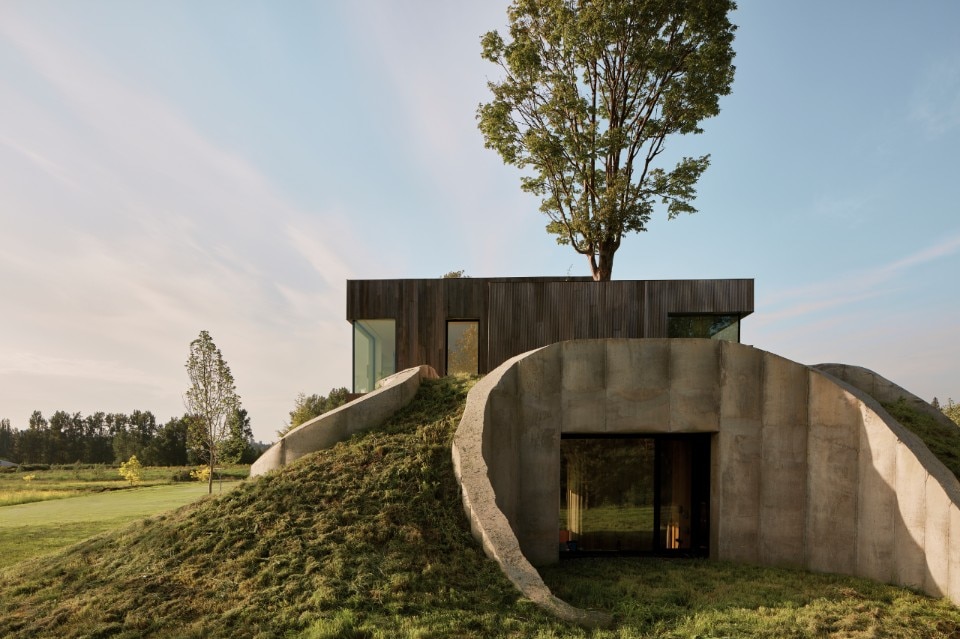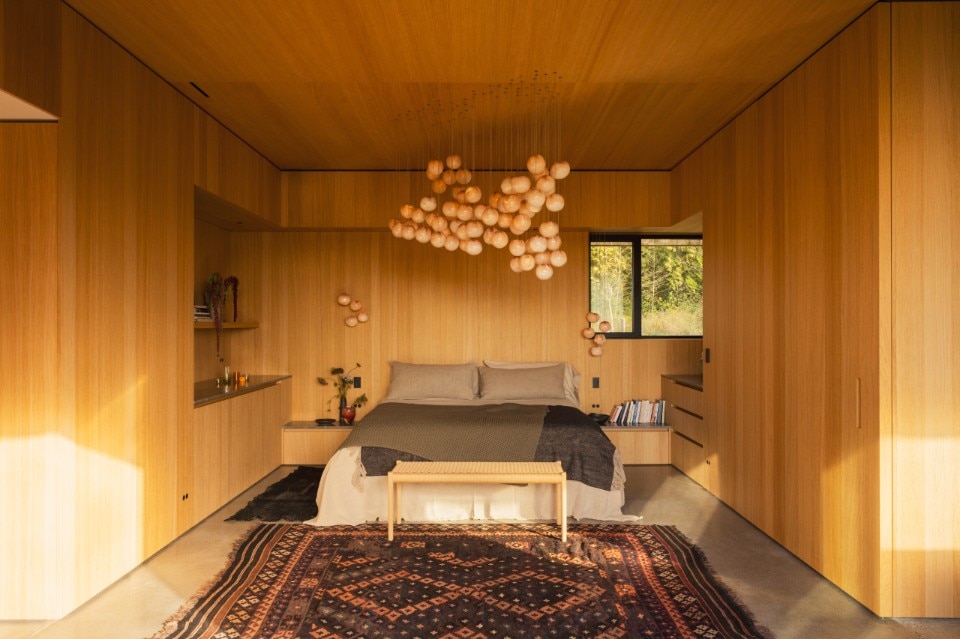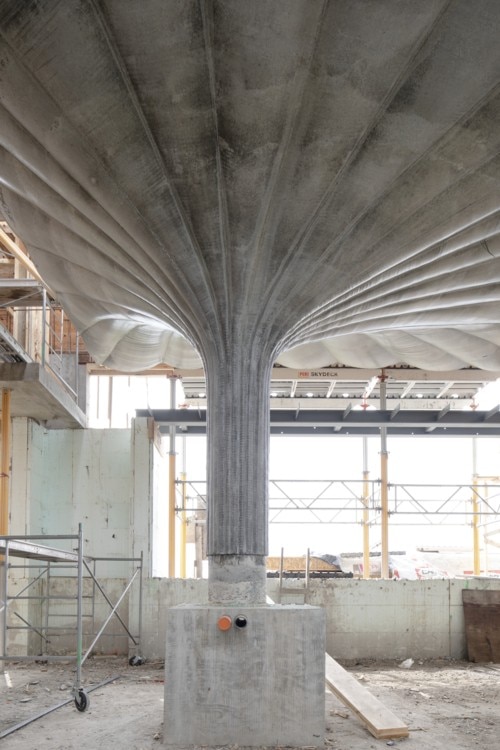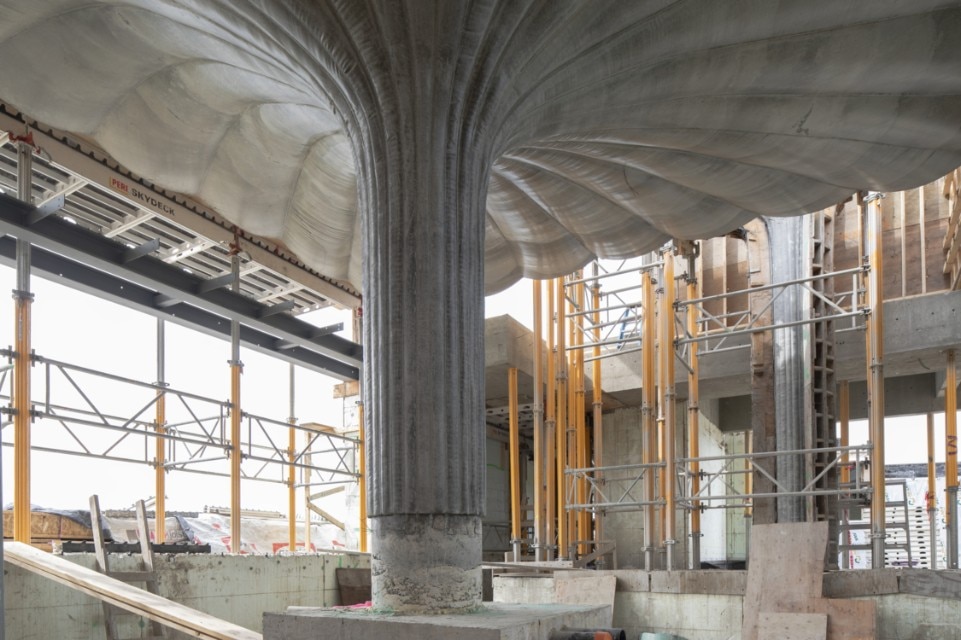“Overall, I think 75.9 was designed after my studio understood its mission, which is to seek form in the ways we manipulate materials.” This is how Omer Arbel comments on his latest creation: an architectural marvel nestled within a picturesque hay field in northwestern Canada, not far from Vancouver.
Understanding the genesis of this project means tracing Arbel's winding path—an odyssey that began in architecture, starting with Enric Miralles in Barcelona and traversing through several Vancouver design studios. Transitioning into design, he co-founded Bocci with entrepreneur Randy Bishop in 2005. Serving as its creative director, this lighting company provided Arbel with an ideal platform to fuse materials production research, a synthesis vividly reflected in the design of Bocci's Vancouver office spaces. Arbel's fascination lies in manipulating the reactions of matter when subjected to diverse stresses—be they chemical, physical, or mechanical. Methodically numbering each attempt and design, his approach almost mimics scientific experiments: his process involves initial exploration, and only then does an object or product take shape. Design, for Arbel, has served as an invaluable training ground, and he now ventures back into the realm of architecture, armed with an approach he considers uniquely his own.
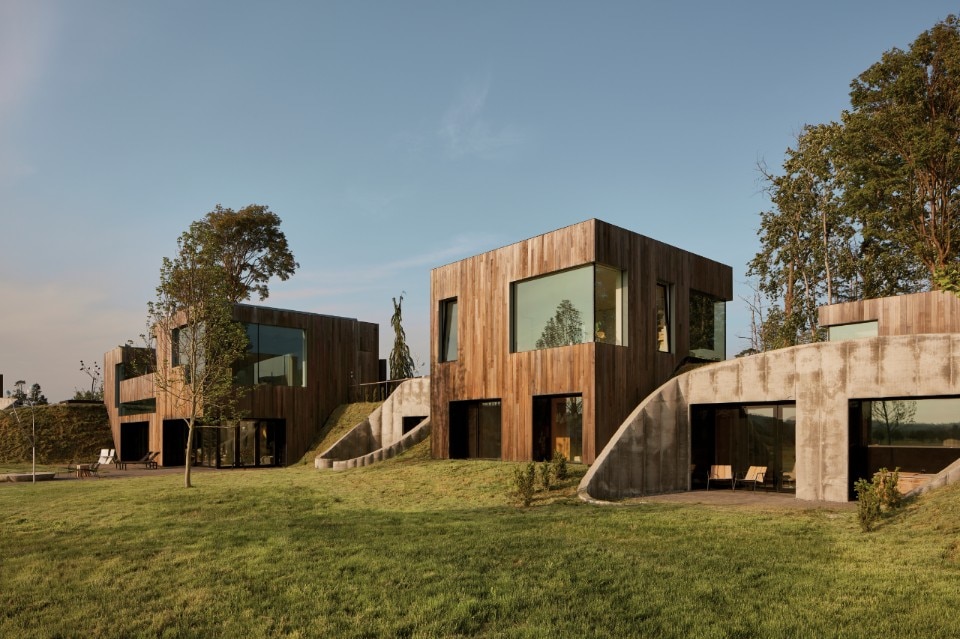
Prior to receiving this commission, his firm had already delved into experimenting with unconventional techniques for shaping concrete, believing that the shapes humans craft from this material frequently bear little or no correlation to its inherent properties. Arbel explains that “75.9 is the first building we executed using fabrics. The fabric formwork is interesting for several reasons. It yields forms that have a direct relationship to the fluid dynamics of the material; the forms naturally tend towards efficient structural lines, therefore reducing the amount of concrete necessary.” The fabric employed is geotextile, conventionally used in infrastructure applications or landscaping. This inexpensive and exceptionally strong material allows moisture and air to seep through during curing — “an essential reason why the system works.”
This process facilitates the formation of pillars resembling "lily pad leaves," characterized by grooves evoking the semblance of ruins within the landscape around which an inhabited shell divided into four double-height spaces crafted from glass and cedar wood was built. To establish a connection between the building and its surroundings, the topography was extended up to the rooftops, while the openings are delineated by curved, ribbed concrete partitions. Furthermore, magnolia trees were strategically placed at the hollow summits of these pillars to enhance continuity with the surrounding landscape.
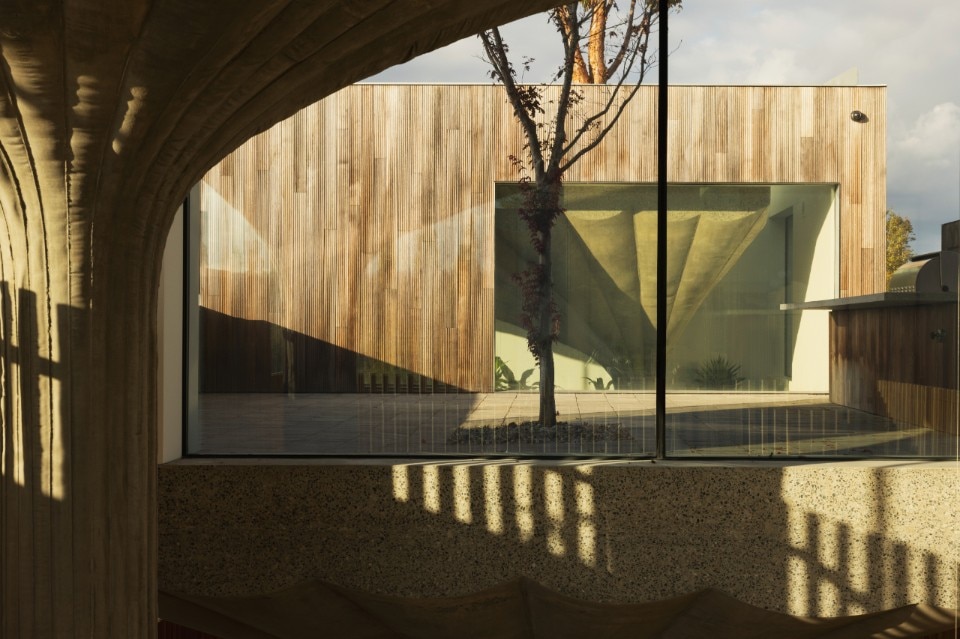
The pillars, visible even from the exterior, take center stage within the expansive double-height interiors. Their staggered arrangement ingeniously fosters cross views between rooms and towards the site's surroundings. The raw, textured materiality of these structures intentionally contrasts with the commanding presence of wood elements and sleek polished concrete flooring, occasionally interrupted by strategically placed planted areas.
However, what are the firm’s insights on the sustainability of the system? “Given the extensive resource consumption involved in construction, we must design buildings to last beyond the current standard of 30-50 years,” mostly due to market pressure. Arbel continues, “It does not matter if we use so called sustainable materials if our building is demolished after such a short window of time.” This is an approach that Arbel not only considers wasteful from an environmental point of view but also harmful to the spiritual connection between humanity and its creations, making them generic and lacking generational longevity. Arbel emphasizes that if we continue to build with this approach, “there is nothing worthy of restoration, not culturally or practically.” However, “if we design for buildings to exist for 200, 300 years, (as we did on 75.9), and imagine them continuously restored and renovated over time rather than demolished and rebuilt... the carbon and other resource costs associated with concrete end up being amortized over a much longer period of time to the point where they at least match the environmental impact of so called sustainable construction methods.”
All photos © Fahim Kassam, courtesy of Bocci


